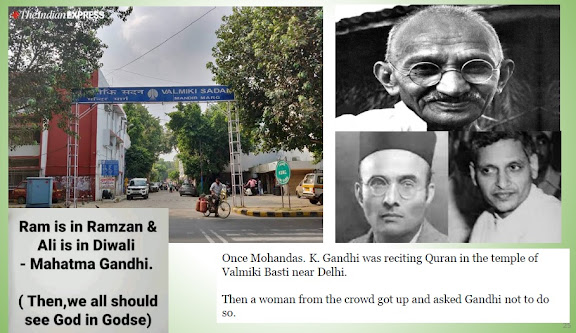Madame Bhikaji Cama (1861-1936)
Madam Cama had unfurled the first National Flag at
the International Socialist Conference in Stuttgart (Germany) in 1907. A
thousand representatives from several countries were attending. An Indian lady
in a colorful sari was a rare phenomena in those days and her majestic
appearance and brave and clear words made everybody think that she was a
Maharani or at least a princess from a native state. She fought for freedom
till the last in her own way, and helped innumerable revolutionaries with money
and materials across the sea as she has settled down in London/Paris at the
beginning of this century. Her life and mission make a fascinating reading,
showing the important role she played in the early years of freedom struggle.
Madam Cama was born on 24th September, 1861 of rich
Parsi
parents. Her father was Sorabji Framji Patel, a famous merchant and man of means, had a large family. Parsis
by then were in the
forefront of business, education, and
industry (when permitted by British) and no less in philanthropy. Young Bhikaji
received good English education, but from the beginning
she was a rebel, and a nationalist. She had good flair to learn languages and
became proficient in arguing her country's cause in different circles at a
young age.
She was married to Rustom
K. R. Cama, a rich handsome social worker and
lawyer. But ideologically they were poles apart. Mr. Cama
adored British, loved their culture and thought they had done a lot of good to
India. Madame Bhikaji, now a full fledged nationalist, always
believed that British had fleeced India, and practiced worst form of
imperialism. She had thousand and one reasons to present how India was kept in
abject poverty by the British to help themselves to become the most powerful
country in the world of that period.
Their marriage proved to incompatible.
Madam Cama meanwhile plunged in several social
activities. Plague broke out in Bombay Presidency at that time and she was in
the forefront of voluntary team which strive to save plague victims. In the end
she herself caught the deadly disease, but was saved miraculously. She was left
very weak and was advised to go to Europe for rest and recuperation. She left
in 1902 for London which was to become her home for the rest of life.
She served as private secretary to Dadabhai
Navaroji,
a great Indian leader in the forefront of national movement. She came in
contact with several patriots students and European Intellectuals who were
sympathetic to Indian cause during this brief period. Later she herself
played a dominant part in promoting freedom struggle.
After Stuttgart, Madam went to United
States. She traveled a lot and informed Americans about Indians struggling for
Independence. She told about British efforts to smother the voice of educated
Indians who protested against tyranny and despotism of British who always
boasted themselves as "mother of parliamentary democracy" over the
world! She could be called "Mother India's first cultural representative
to USA." After returning to London she started publishing booklets on
patriotic literature. Though believer in nonviolence she urged to resist
unjustified violence. Tyrannical foreign rule was unjustified and she stood for
Swaraj
or self-rule. "March forward! We are for India. India is for Indians!“
- She declared. She fought for unity of
Hindus and Muslims. She continued financing revolutionaries in and out of
India. British were not happy with her activities and there was a plot to
finish her off. Getting the wind she sailed for France.
Her Paris-home became a shelter for world
revolutionaries. Even Lenin, the father of Russian revolution visited her house
and exchanged views. Savarkar got all encouragement in writing the
history of 1st Indian War of Independence from Cama. She helped its printing in Holland as
no English publisher came forward to publish it. It was banned book but found
its way to India. Smuggled ingeniously with "Don Quixote" covers! She
became publisher of "Vande Mataram" a revolutionary magazine and was a
distributor as well, an extremely difficult task in the days of British
Espionage. Another magazine "Madan's Talwar" was also started in memory of Madanlas
Dhingra
who had laid down his life for the country. Both the magazines were outlawed in
India and England. Madam Cama somehow found ways to send them to
Indian revolution going and for self-defense.
Madam Cama also fought for the cause of women.
Speaking at National Conference at Cairo, Egypt in 1910, she asked, "Where
is the other half of Egypt? I see only men who represent half the
country!" She stressed the role of women in building a nation.
Her attempts to save Savarkar
who jumped into the ocean from the ship "Morena" near Marseilles are well known. A
few minutes delay saw the famous revolutionary back into chains, a fact which
Madam Cama, came to regret for life.
When First World War broke out in 1914,
Madam Cama took anti-British stand and tried her
best to bring in awareness among Indians about the harm brought in by fighting
imperialist forces.
The British had banned her entry in India
being afraid of her revolutionary past and confirmed nationalistic outlook. But
the lioness was getting old and 35 years fighting on foreign land and taken its
toll. She decided to return to motherland but was very ill. After reaching
Bombay, she was hospitalized and died on the 13th of August 1936. A fearless
woman, she brought in awareness of Indian struggle for independence in Europe
and America and was instrumental in helping several revolutionaries, with finances
and publishing.
Source: Article by Dr.Jyotna
Kamat
Courtesy: S. Sankaran, Editor.




Comments